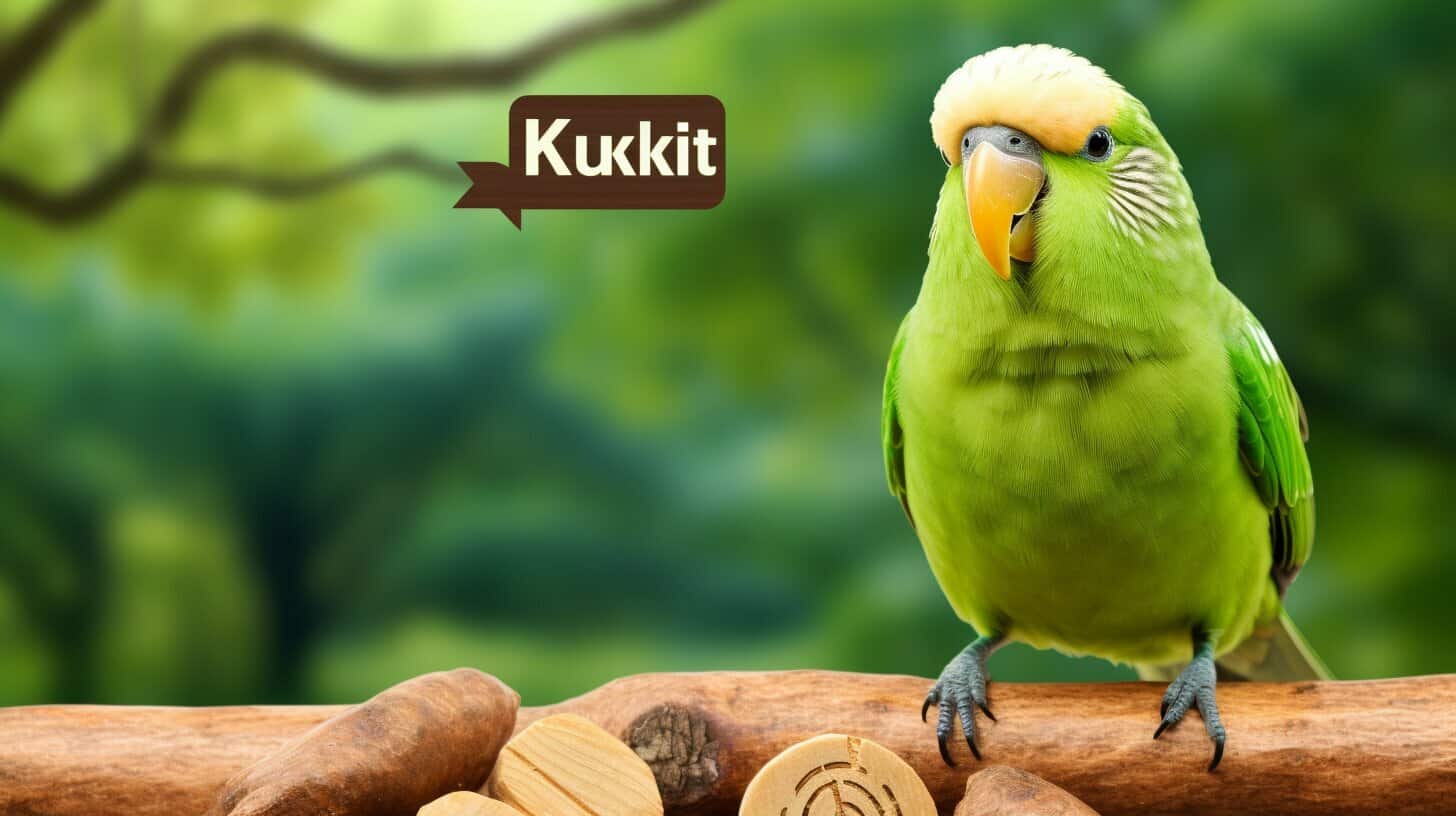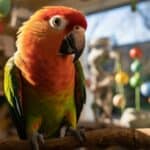Welcome to our guide on feeding nuts to your beloved kakarikis! As pet owners, we want to ensure that our feathered friends receive the best possible care, including a suitable diet that meets their nutritional needs.
One common question that arises is, what nuts can Kakarikis eat? In this article, we will explore the benefits of adding nuts to their diet and provide a comprehensive guide on choosing the best and safest nuts for your kakarikis.
Key Takeaways:
- Feeding kakarikis a balanced and varied diet is essential for their health and wellbeing.
- Nuts can be a valuable addition to their diet, providing key nutrients and a source of enrichment.
- It is crucial to select safe nuts suitable for kakarikis, as some can be harmful or toxic to them.
- Consulting with avian professionals can provide personalized dietary recommendations to ensure the best care for your pet kakarikis.
Understanding the Kakariki Diet
Kakarikis are native to New Zealand and have a natural diet consisting of various seeds, fruit, and insects. In captivity, offering a balanced and varied diet is essential to ensure their health and well-being. This means providing a range of nutrients through various food sources.
Nuts can be an excellent addition to a kakariki’s diet. They are a great source of protein, healthy fats, and other essential nutrients. However, it’s important to note that nuts should only be given in moderation, as they are high in fat and calories.
When incorporating nuts into your Kakariki’s diet, it’s crucial to choose the types of nuts that are safe and suitable for them to consume. Some nuts contain toxins or high levels of fat that can harm your bird.
It’s also important to consider your Kakariki’s individual dietary needs. Factors such as age, gender, and activity level can affect the amount and type of food they require.
Incorporating Nuts into Your Kakariki’s Diet
When feeding your Kakariki nuts, it’s best to opt for unsalted, raw, or roasted nuts. The following are some of the safest nuts for Kakarikis to consume:
| Nut | Nutritional Profile |
|---|---|
| Almonds | High in protein, vitamin E, and healthy fats |
| Walnuts | High in omega-3 fatty acids, protein, and antioxidants |
| Hazelnuts | Rich in vitamins and minerals, including vitamin E, fiber, and healthy fats |
Introducing nuts into your Kakariki’s diet gradually is important, starting with small amounts and monitoring their response. You can offer nuts as a treat or mix them with their regular food.
Limiting the number of nuts you give to your Kakariki is also essential. As mentioned, nuts are high in fat and calories, and too many can lead to obesity or other health issues.
It’s a good idea to consult with a veterinarian or avian specialist before making any significant changes to your Kakariki’s diet, including introducing nuts. They can provide personalized recommendations based on your bird’s individual needs and ensure they are getting a balanced and healthy diet.
Safe Nuts for Kakarikis: A Nutritional Guide
When it comes to feeding your kakariki, it is important to choose nuts that are safe and provide a range of nutritional benefits. Here are some nuts that are suitable for your pet bird:
| Nut | Nutritional Benefits |
|---|---|
| Almonds | Rich in vitamin E, calcium, and healthy fats |
| Cashews | Good source of protein, iron, and magnesium |
| Walnuts | High in omega-3 fatty acids and antioxidants |
| Hazelnuts | Excellent source of fiber, vitamin E, and healthy fats |
| Peanuts | High in protein, healthy fats, and fibre |
| Pistachios | Contain vitamin B6, copper, and phosphorus |
Remember always to offer nuts in moderation and small portions. Too many nuts can lead to obesity and other health problems. It is also important to introduce new nuts to your kakariki’s diet gradually, as sudden changes in diet can cause stress and digestive issues.
Additionally, when buying nuts for your kakariki, ensure they are unsalted, raw or dry roasted, and free from added oils, sugar, or other additives.
Offering Nuts to Kakarikis: Dos and Don’ts
Feeding nuts to your kakarikis can be a great way to provide them with essential nutrients and keep them happy and healthy. However, it’s important to follow some guidelines to ensure they get the appropriate nuts and types of nuts in their diet. Here are some dos and don’ts to consider:
| Do | Don’t |
|---|---|
|
|
By following these simple dos and don’ts, you can safely feed your kakarikis nuts as part of their balanced diet and ensure they get the right nutrients to keep them healthy and happy. Always prioritize your bird’s health when making decisions about their diet, and consult with experts if you have any concerns.
Hazards and Nuts to Avoid
While feeding nuts to your kakariki can be a healthy and enjoyable addition to their diet, it’s important to be aware of any potential hazards or nuts that may cause harm. Here’s what to avoid:
- Macadamia nuts: These can be toxic to kakarikis and should be avoided at all costs.
- Almonds: While almonds are not toxic, they can be difficult for kakarikis to digest and may cause digestive issues.
- Walnuts: These nuts have a high fat content, which can harm birds when consumed excessively. Small amounts as an occasional treat are okay.
It’s also important to note that any nuts that are salted, flavoured, or contain other additives should be avoided. These can be harmful to your bird’s health.
When feeding nuts to your kakariki, monitor them closely for any signs of choking or allergies. It’s always best to introduce new foods slowly and in small amounts to ensure they are well tolerated.
Nut-Free Alternatives for Kakarikis
While nuts can provide many nutritional benefits to kakarikis, some pet owners may prefer to avoid feeding their birds nuts altogether. Fortunately, several alternative food options can provide similar benefits.
One great alternative is fresh fruits and vegetables. Kakarikis enjoy a variety of fruits, including apples, bananas, and berries, as well as vegetables like carrots, broccoli, and kale. These foods are rich in essential vitamins, minerals, and fibre, making them an excellent addition to any bird’s diet.
Another option is cooked grains and legumes, such as quinoa, brown rice, and lentils. These foods are high in protein and complex carbohydrates, providing energy for active birds like kakarikis.
It is important to note that while alternative food options can provide similar nutritional benefits, offering a diverse and balanced diet to kakarikis is still crucial. Pet owners should consult with avian professionals to ensure their birds receive all the nutrients for optimal health and well-being.
Incorporating Nuts into Kakariki Treats
Looking for a fun and creative way to include nuts in your kakariki’s diet? Why not try making some homemade bird treats that are both healthy and delicious? Here are two easy recipes you can create with your feathered friend in mind:
Recipe 1: Nutty Fruit Kebabs
| Ingredients: | Instructions: |
|---|---|
|
|
This recipe is a great way to incorporate nuts with various fruits to create a sweet and savoury snack for your feathered friend. It can also add some colourful variety to their diet as a bonus!
Recipe 2: Nutty Birdie Balls
| Ingredients: | Instructions: |
|---|---|
|
|
This recipe is perfect for those who want to create a homemade bird treat that is easy to make and can be stored for later. The nutty birdie balls are packed with healthy ingredients that your kakariki will love!
Remember to always monitor your bird while they consume any new treats and ensure they are eating a balanced diet in addition to any treats or snacks.
Ensuring a Balanced Diet for Kakarikis
Offering nuts to your kakarikis is a great way to diversify their diet and provide them with essential nutrients. However, it’s important to remember that nuts shouldn’t be the only food item in their diet.
As mentioned earlier, kakarikis require a varied diet that includes fruits, vegetables, grains, and protein sources. When offering nuts, ensure it’s in moderation and combination with other food items. This will prevent your birds from developing an imbalanced or unhealthy diet.
Consult with avian professionals to determine the appropriate portion sizes and frequency of feeding nuts based on your bird’s needs. Avian veterinarians or nutritionists can help you create a suitable diet plan that suits your kakarikis’ needs and preferences.
It’s also a good idea to rotate the types of nuts you offer your kakarikis to ensure they receive different nutrients. This will help avoid potential deficiencies from limited nut varieties in their diet.
Finally, monitoring your kakarikis’ weight and overall health is important. Overfeeding can lead to obesity and other health issues, while lacking nutrients could result in malnourishment or other health problems. If you notice any changes in your bird’s eating habits, consult a veterinarian immediately.
Conclusion
Feeding kakarikis the right diet is crucial for their health and well-being. Nuts can be a nutritious addition to their diet, but choosing the right types and feeding them in moderation is essential.
Our guide has highlighted some safe and suitable nuts for kakarikis, such as almonds, pecans, and walnuts, and provided guidelines when offering nuts to your feathered friends.
Consult with Avian Professionals For Personalized Recommendations
Remember, every kakariki is unique, and their dietary needs may vary depending on their age, activity level, and overall health. We recommend consulting with avian professionals, such as veterinarians or certified bird behaviourists, for personalised dietary recommendations.
Incorporating healthy foods into your kakariki’s diet, such as fruits, vegetables, and whole grains, can help ensure a balanced and nutritious diet.
Following our guide and consulting with avian professionals can help keep your kakariki healthy, happy, and thriving.
FAQ
Q: What nuts can kakarikis eat?
A: Kakarikis can safely consume a variety of nuts, but some are more suitable than others. It’s important to choose safe nuts and provide nutritional benefits to these pet birds.
Q: How should I incorporate nuts into the kakariki diet?
A: Nuts can be offered as part of a balanced and varied diet for kakarikis. They can be given whole or crushed and mixed with bird-friendly foods, such as fruits and vegetables.
Q: Which nuts are safe for kakarikis to consume?
A: Safe nuts for kakarikis include almonds, walnuts, pecans, and hazelnuts. These nuts provide essential nutrients and can be a healthy addition to their diet in appropriate portions.
Q: How much and how often should I feed nuts to kakarikis?
A: Nuts should be offered in moderation to kakarikis. A few pieces per day can be given as a treat, but they should not make up a large portion of their daily diet. Consult with an avian professional for specific guidelines.
Q: Are there any nuts that kakarikis should avoid?
A: Yes, some nuts can be toxic or harmful to kakarikis. Avoid feeding them macadamia nuts and pistachios, as these can cause health issues for these birds.
Q: What are some nut-free alternatives for kakarikis?
A: If you prefer to offer nut-free options, you can include fruits like apples, bananas, and berries, as well as vegetables like carrots and leafy greens in their diet. These food items can provide similar nutritional benefits to nuts.
Q: Can I make homemade treats with nuts for my kakariki?
A: Absolutely! Homemade treats can be fun to incorporate nuts into your kakariki’s diet. Just make sure to use safe ingredients and follow bird-friendly recipes that don’t include any harmful substances.
Q: How can I ensure a balanced diet for my kakarikis?
A: To ensure a balanced diet for your kakarikis, offer a variety of foods, including nuts, fruits, vegetables, and quality pelleted bird food. This will help meet their nutritional needs and promote their overall health.



Have comments or questions about this article? Then get involved!
Spotted an error or something we have missed? Let us know